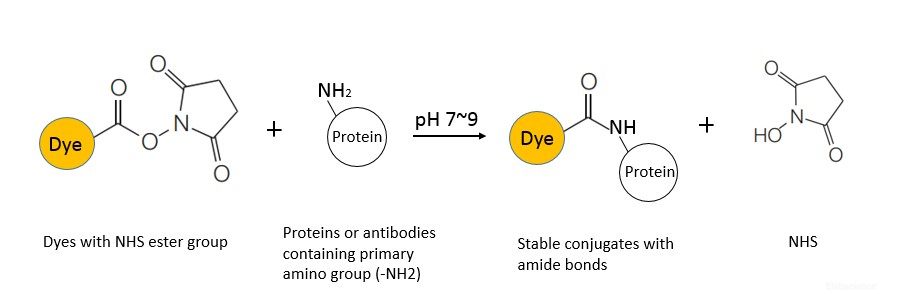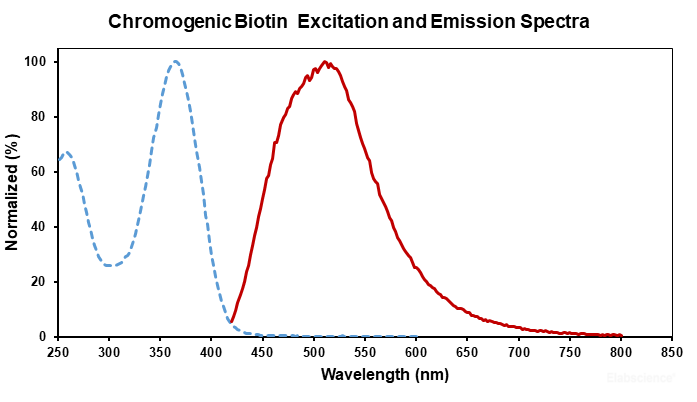
Chromogenic Biotin Labeling Kit (3 KD Filtration Tube)
Chromogenic Biotin Labeling Kit (3 KD Filtration Tube)
Introduction
Elabscience® Chromogenic Biotin Labeling Kit provides all the reagents required for labeling, which can label proteins containing primary amino-group (-NH2) molecules simply and effectively.
Technical Information
| Technical Information | Elabscience® Chromogenic Biotin Labeling Kit provides all the reagents required for labeling, which can label antibodies and other proteins containing primary amino-group (-NH2) molecules simply and effectively. |
| Applications | Protein labeling (3 KD Filtration tube) |
| Principle |  |
| Labeling group | Chromogenic Biotin |
| Spectrum |  |
Characteristic
- Fast: The whole process takes only 90 min.
- Convenient: The dye has been activated and can be used directly. Filtration tube desalts without dialysis.
- Flexible use: It can be used for both micro-labeling and large-scale labeling, and can label 0.1-1 mg proteins each time.
- Biotin quantitative labeling: biotin with optimized structure and chromophore group can be quantified after labeling.
Materials Not Supplied
1. Pipettor and tips (0.5-10μL, 2-20μL, 20-200μL, 200-1000μL).
2. Ultraviolet spectrophotometer or nanodrop or multifunctional microplate reader.
3. 37°C incubator.
4. Centrifuge (centrifugal force up to 12,000×g).
Shipping & Storage Information
| Storage | 2~8°C/-20°C, shading light |
| Shipping | Ice bag |
| Expiration date | 12 months |
Notes
- Please select the appropriate kit according to the molecular weight of the protein to be labeled. The kit provides a 3 KD Filtration tube.
- Chromogenic Biotin is susceptible to moisture hydrolysis failure, and should be stored at -20°C or -80°C with the desiccant. In order to prevent water vapor from condensing into the dye, it is necessary to equilibrate the dye to room before the experiment.
- The kit can also be used to label other proteins containing free amino groups. The specific labeling ratio is determined according to the number of available amino groups in the marker or set different molar ratios for labeling.
